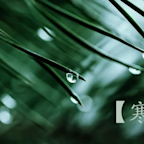搜尋結果
夏至
- 2025年6月21日星期六 農曆 五月廿六
- 2025年6月21日星期六
The summer solstice occurs during the hemisphere's summer. In the Northern Hemisphere, this is the June solstice (20, 21 or 22 June) and in the Southern Hemisphere, this is the December solstice (20, 21, 22 or 23 of December).
Xiàzhì is the 10th solar term, and marks the summer solstice, [1] in the traditional Chinese lunisolar calendar dividing a year into 24 solar terms. [2] It begins when the Sun reaches the celestial longitude of 90° and ends when it reaches the longitude of 105°.
Illumination of Earth by the Sun on the day of the June solstice The June solstice is the solstice on Earth that occurs annually between 20 and 22 June according to the Gregorian calendar.In the Northern Hemisphere, the June solstice is the summer solstice (the day with the longest period of daylight), while in the Southern Hemisphere it is the winter solstice (the day with the shortest period ...
Xiàzhì or Geshi (Chinese and Japanese: 夏至; Korean: 하지(Haji); Vietnamese: Hạ chí; "summer's extreme") is the 10th solar term, and marks the summer solstice. It begins when the Sun reaches the celestial longitude of 90° (around June 21) and ends when the Sun reaches the longitude of 105° (around July 7).
Midsummer is a celebration of the season of summer, taking place on or near the date of the summer solstice in the Northern Hemisphere; the longest day of the year. The name "midsummer" mainly refers to summer solstice festivals of European origin, especially those in the Nordic countries. In these cultures it is traditionally regarded as the ...
20–21 January. A solar term (or jieqi, simplified Chinese: 节气; traditional Chinese: 節氣) is any of twenty-four periods in traditional Chinese lunisolar calendars that matches a particular astronomical event or signifies some natural phenomenon. [1] The points are spaced 15° apart along the ecliptic [2] and are used by lunisolar ...
t. e. The traditional Chinese calendar ( traditional Chinese: 農曆; simplified Chinese: 农历; lit. 'agricultural calendar'; informally traditional Chinese: 陰曆; simplified Chinese: 阴历; lit. ' lunar calendar ') is a lunisolar calendar, combining the solar, lunar, and other cycles for various social and agricultural purposes.





























